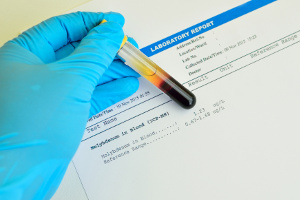afterLoad (456.41KB) (701μs)
afterInitialise (1.27MB) (74.38ms)
afterRoute (927.02KB) (32.45ms)
beforeRenderComponent com_content (23.53KB) (364μs)
Before Access::preloadComponents (all components) (35.84KB) (328μs)
After Access::preloadComponents (all components) (97.34KB) (3.59ms)
Before Access::preloadPermissions (com_content) (1.6KB) (26μs)
After Access::preloadPermissions (com_content) (3.29MB) (30.57ms)
Before Access::getAssetRules (id:8991 name:com_content.article.4793) (130.65KB) (141μs)
After Access::getAssetRules (id:8991 name:com_content.article.4793) (7.38KB) (72μs)
beforeRenderRawModule mod_tags_similar (TIP! See also the related articles) (1.33MB) (122ms)
afterRenderRawModule mod_tags_similar (TIP! See also the related articles) (587.7KB) (149ms)
beforeRenderModule mod_tags_similar (TIP! See also the related articles) (752B) (12μs)
afterRenderModule mod_tags_similar (TIP! See also the related articles) (6.93KB) (169μs)
beforeRenderRawModule mod_custom (Search for more information...) (3.63KB) (65μs)
afterRenderRawModule mod_custom (Search for more information...) (4.23KB) (368μs)
beforeRenderModule mod_custom (Search for more information...) (736B) (3μs)
afterRenderModule mod_custom (Search for more information...) (4.32KB) (38μs)
afterRenderComponent com_content (36.33KB) (66.14ms)
Before Access::getAssetRules (id:8 name:com_content) (50.11KB) (8.09ms)
After Access::getAssetRules (id:8 name:com_content) (6.17KB) (83μs)
afterDispatch (43.77KB) (3.97ms)
beforeRenderRawModule mod_articles_category (READ MORE...) (32.3KB) (574μs)
afterRenderRawModule mod_articles_category (READ MORE...) (89.14KB) (247ms)
beforeRenderRawModule mod_tags_popular (Search) (4.81KB) (44μs)
afterRenderRawModule mod_tags_popular (Search) (6.48KB) (66.13ms)
beforeRenderRawModule mod_custom (BOOST YOUR IMMUNE DEFENSE) (960B) (34μs)
afterRenderRawModule mod_custom (BOOST YOUR IMMUNE DEFENSE) (912B) (53μs)
beforeRenderRawModule mod_articles_category (Get additionel and more detailed knowledge about) (8.41KB) (26μs)
afterRenderRawModule mod_articles_category (Get additionel and more detailed knowledge about) (44.41KB) (21.57ms)
beforeRenderRawModule mod_custom (Antiaging) (6.97KB) (37μs)
afterRenderRawModule mod_custom (Antiaging) (1KB) (49μs)
beforeRenderRawModule mod_custom (Exercise) (720B) (13μs)
afterRenderRawModule mod_custom (Exercise) (2.27KB) (25μs)
beforeRenderModule mod_articles_category (READ MORE...) (276.63KB) (16.29ms)
afterRenderModule mod_articles_category (READ MORE...) (1.25KB) (68μs)
beforeRenderModule mod_tags_popular (Search) (5.17KB) (16μs)
afterRenderModule mod_tags_popular (Search) (1.27KB) (27μs)
beforeRenderModule mod_custom (BOOST YOUR IMMUNE DEFENSE) (1.31KB) (12μs)
afterRenderModule mod_custom (BOOST YOUR IMMUNE DEFENSE) (1.28KB) (22μs)
beforeRenderModule mod_articles_category (Get additionel and more detailed knowledge about) (8.03KB) (18μs)
afterRenderModule mod_articles_category (Get additionel and more detailed knowledge about) (1.31KB) (21μs)
beforeRenderModule mod_custom (Antiaging) (7.33KB) (11μs)
afterRenderModule mod_custom (Antiaging) (1.27KB) (21μs)
beforeRenderModule mod_custom (Exercise) (336B) (5.64ms)
afterRenderModule mod_custom (Exercise) (1.25KB) (71μs)
beforeRenderRawModule mod_menu (Main menu-US) (18.38KB) (530μs)
afterRenderRawModule mod_menu (Main menu-US) (156.98KB) (14.02ms)
beforeRenderModule mod_menu (Main menu-US) (720B) (6μs)
afterRenderModule mod_menu (Main menu-US) (4.61KB) (80μs)
beforeRenderRawModule mod_languages (Sprogskift) (3.69KB) (24μs)
afterRenderRawModule mod_languages (Sprogskift) (88.45KB) (7.31ms)
beforeRenderModule mod_languages (Sprogskift) (720B) (8μs)
afterRenderModule mod_languages (Sprogskift) (5.31KB) (27μs)
beforeRenderRawModule mod_finder () (6.34KB) (15μs)
afterRenderRawModule mod_finder () (150.16KB) (25.13ms)
beforeRenderModule mod_finder () (704B) (5μs)
afterRenderModule mod_finder () (3.29KB) (53μs)
beforeRenderRawModule mod_custom () (6.62KB) (2.96ms)
afterRenderRawModule mod_custom () (21.95KB) (7.77ms)
beforeRenderModule mod_custom () (704B) (10μs)
afterRenderModule mod_custom () (1.23KB) (69μs)
beforeRenderRawModule mod_menu (Main menu-US) (5.07KB) (142μs)
afterRenderRawModule mod_menu (Main menu-US) (6.02KB) (5.67ms)
beforeRenderModule mod_menu (Main menu-US) (720B) (8μs)
afterRenderModule mod_menu (Main menu-US) (3.75KB) (96μs)
beforeRenderRawModule mod_languages (Sprogskift Mobil) (912B) (32μs)
afterRenderRawModule mod_languages (Sprogskift Mobil) (3.89KB) (5.2ms)
beforeRenderModule mod_languages (Sprogskift Mobil) (720B) (9μs)
afterRenderModule mod_languages (Sprogskift Mobil) (1.27KB) (45μs)
beforeRenderRawModule mod_finder () (2.3KB) (18μs)
afterRenderRawModule mod_finder () (6.29KB) (7.27ms)
beforeRenderModule mod_finder () (704B) (8μs)
afterRenderModule mod_finder () (1.23KB) (65μs)
beforeRenderRawModule mod_custom () (8.66KB) (230μs)
afterRenderRawModule mod_custom () (944B) (192μs)
beforeRenderModule mod_custom () (704B) (3μs)
afterRenderModule mod_custom () (2.43KB) (29μs)
beforeRenderRawModule mod_custom () (688B) (89μs)
afterRenderRawModule mod_custom () (896B) (94μs)
beforeRenderModule mod_custom () (704B) (2μs)
afterRenderModule mod_custom () (2.71KB) (23μs)
afterRender (155.2KB) (17.55ms)
| 1 x afterRenderRawModule mod_articles_category (READ MORE...) (89.14KB) (25.99%) | 246.83ms |
| 1 x afterRenderRawModule mod_tags_similar (TIP! See also the related articles) (587.7KB) (15.67%) | 148.85ms |
| 1 x beforeRenderRawModule mod_tags_similar (TIP! See also the related articles) (1.33MB) (12.81%) | 121.64ms |
| 1 x afterInitialise (1.27MB) (7.83%) | 74.38ms |
| 1 x afterRenderComponent com_content (36.33KB) (6.96%) | 66.14ms |
| 1 x afterRenderRawModule mod_tags_popular (Search) (6.48KB) (6.96%) | 66.13ms |
| 1 x afterRoute (927.02KB) (3.42%) | 32.45ms |
| 1 x After Access::preloadPermissions (com_content) (3.29MB) (3.22%) | 30.57ms |
| 1 x afterRenderRawModule mod_finder () (150.16KB) (2.65%) | 25.13ms |
| 1 x afterRenderRawModule mod_articles_category (Get additionel and more detailed knowledge about) (44.41KB) (2.27%) | 21.57ms |
| 1 x afterRender (155.2KB) (1.85%) | 17.55ms |
| 1 x beforeRenderModule mod_articles_category (READ MORE...) (276.63KB) (1.72%) | 16.29ms |
| 1 x afterRenderRawModule mod_menu (Main menu-US) (156.98KB) (1.48%) | 14.02ms |
| 1 x Before Access::getAssetRules (id:8 name:com_content) (50.11KB) (0.85%) | 8.09ms |
| 1 x afterRenderRawModule mod_custom () (21.95KB) (0.82%) | 7.77ms |
| 1 x afterRenderRawModule mod_languages (Sprogskift) (88.45KB) (0.77%) | 7.31ms |
| 1 x afterRenderRawModule mod_finder () (6.29KB) (0.77%) | 7.27ms |
| 1 x afterRenderRawModule mod_menu (Main menu-US) (6.02KB) (0.6%) | 5.67ms |
| 1 x beforeRenderModule mod_custom (Exercise) (336B) (0.59%) | 5.64ms |
| 1 x afterRenderRawModule mod_languages (Sprogskift Mobil) (3.89KB) (0.55%) | 5.20ms |
| 1 x afterDispatch (43.77KB) (0.42%) | 3.97ms |
| 1 x After Access::preloadComponents (all components) (97.34KB) (0.38%) | 3.59ms |
| 1 x beforeRenderRawModule mod_custom () (6.62KB) (0.31%) | 2.96ms |
| 1 x afterLoad (456.41KB) (0.07%) | 701μs |
| 1 x beforeRenderRawModule mod_articles_category (READ MORE...) (32.3KB) (0.06%) | 574μs |
| 1 x beforeRenderRawModule mod_menu (Main menu-US) (18.38KB) (0.06%) | 530μs |
| 1 x afterRenderRawModule mod_custom (Search for more information...) (4.23KB) (0.04%) | 368μs |
| 1 x beforeRenderComponent com_content (23.53KB) (0.04%) | 364μs |
| 1 x Before Access::preloadComponents (all components) (35.84KB) (0.03%) | 328μs |
| 1 x beforeRenderRawModule mod_custom () (8.66KB) (0.02%) | 230μs |
| 1 x afterRenderRawModule mod_custom () (944B) (0.02%) | 192μs |
| 1 x afterRenderModule mod_tags_similar (TIP! See also the related articles) (6.93KB) (0.02%) | 169μs |
| 1 x beforeRenderRawModule mod_menu (Main menu-US) (5.07KB) (0.01%) | 142μs |
| 1 x Before Access::getAssetRules (id:8991 name:com_content.article.4793) (130.65KB) (0.01%) | 141μs |
| 1 x afterRenderModule mod_menu (Main menu-US) (3.75KB) (0.01%) | 96μs |
| 1 x afterRenderRawModule mod_custom () (896B) (0.01%) | 94μs |
| 1 x beforeRenderRawModule mod_custom () (688B) (0.01%) | 89μs |
| 1 x After Access::getAssetRules (id:8 name:com_content) (6.17KB) (0.01%) | 83μs |
| 1 x afterRenderModule mod_menu (Main menu-US) (4.61KB) (0.01%) | 80μs |
| 1 x After Access::getAssetRules (id:8991 name:com_content.article.4793) (7.38KB) (0.01%) | 72μs |
| 1 x afterRenderModule mod_custom (Exercise) (1.25KB) (0.01%) | 71μs |
| 1 x afterRenderModule mod_custom () (1.23KB) (0.01%) | 69μs |
| 1 x afterRenderModule mod_articles_category (READ MORE...) (1.25KB) (0.01%) | 68μs |
| 1 x beforeRenderRawModule mod_custom (Search for more information...) (3.63KB) (0.01%) | 65μs |
| 1 x afterRenderModule mod_finder () (1.23KB) (0.01%) | 65μs |
| 1 x afterRenderModule mod_finder () (3.29KB) (0.01%) | 53μs |
| 1 x afterRenderRawModule mod_custom (BOOST YOUR IMMUNE DEFENSE) (912B) (0.01%) | 53μs |
| 1 x afterRenderRawModule mod_custom (Antiaging) (1KB) (0.01%) | 49μs |
| 1 x afterRenderModule mod_languages (Sprogskift Mobil) (1.27KB) (0%) | 45μs |
| 1 x beforeRenderRawModule mod_tags_popular (Search) (4.81KB) (0%) | 44μs |
| 1 x afterRenderModule mod_custom (Search for more information...) (4.32KB) (0%) | 38μs |
| 1 x beforeRenderRawModule mod_custom (Antiaging) (6.97KB) (0%) | 37μs |
| 1 x beforeRenderRawModule mod_custom (BOOST YOUR IMMUNE DEFENSE) (960B) (0%) | 34μs |
| 1 x beforeRenderRawModule mod_languages (Sprogskift Mobil) (912B) (0%) | 32μs |
| 1 x afterRenderModule mod_custom () (2.43KB) (0%) | 29μs |
| 1 x afterRenderModule mod_tags_popular (Search) (1.27KB) (0%) | 27μs |
| 1 x afterRenderModule mod_languages (Sprogskift) (5.31KB) (0%) | 27μs |
| 1 x Before Access::preloadPermissions (com_content) (1.6KB) (0%) | 26μs |
| 1 x beforeRenderRawModule mod_articles_category (Get additionel and more detailed knowledge about) (8.41KB) (0%) | 26μs |
| 1 x afterRenderRawModule mod_custom (Exercise) (2.27KB) (0%) | 25μs |
| 1 x beforeRenderRawModule mod_languages (Sprogskift) (3.69KB) (0%) | 24μs |
| 1 x afterRenderModule mod_custom () (2.71KB) (0%) | 23μs |
| 1 x afterRenderModule mod_custom (BOOST YOUR IMMUNE DEFENSE) (1.28KB) (0%) | 22μs |
| 1 x afterRenderModule mod_articles_category (Get additionel and more detailed knowledge about) (1.31KB) (0%) | 21μs |
| 1 x afterRenderModule mod_custom (Antiaging) (1.27KB) (0%) | 21μs |
| 1 x beforeRenderRawModule mod_finder () (2.3KB) (0%) | 18μs |
| 1 x beforeRenderModule mod_articles_category (Get additionel and more detailed knowledge about) (8.03KB) (0%) | 18μs |
| 1 x beforeRenderModule mod_tags_popular (Search) (5.17KB) (0%) | 16μs |
| 3 x beforeRenderModule mod_custom () (704B) (0%) | 15μs |
| 1 x beforeRenderRawModule mod_finder () (6.34KB) (0%) | 15μs |
| 2 x beforeRenderModule mod_menu (Main menu-US) (720B) (0%) | 14μs |
| 1 x beforeRenderRawModule mod_custom (Exercise) (720B) (0%) | 13μs |
| 2 x beforeRenderModule mod_finder () (704B) (0%) | 13μs |
| 1 x beforeRenderModule mod_custom (BOOST YOUR IMMUNE DEFENSE) (1.31KB) (0%) | 12μs |
| 1 x beforeRenderModule mod_tags_similar (TIP! See also the related articles) (752B) (0%) | 12μs |
| 1 x beforeRenderModule mod_custom (Antiaging) (7.33KB) (0%) | 11μs |
| 1 x beforeRenderModule mod_languages (Sprogskift Mobil) (720B) (0%) | 9μs |
| 1 x beforeRenderModule mod_languages (Sprogskift) (720B) (0%) | 8μs |
| 1 x beforeRenderModule mod_custom (Search for more information...) (736B) (0%) | 3μs |
 Molybdenum is essential for liver detoxification and plays a key role in breaking down proteins, purines, and lipids. It also supports the synthesis of vitamin B12. Studies even suggest that a molybdenum deficiency or poor utilization of the nutrient increases the risk of gout, non-alcoholic fatty liver disease (NAFLD), and hepatocellular carcinoma, which is a type of liver cancer.
Molybdenum is essential for liver detoxification and plays a key role in breaking down proteins, purines, and lipids. It also supports the synthesis of vitamin B12. Studies even suggest that a molybdenum deficiency or poor utilization of the nutrient increases the risk of gout, non-alcoholic fatty liver disease (NAFLD), and hepatocellular carcinoma, which is a type of liver cancer.







